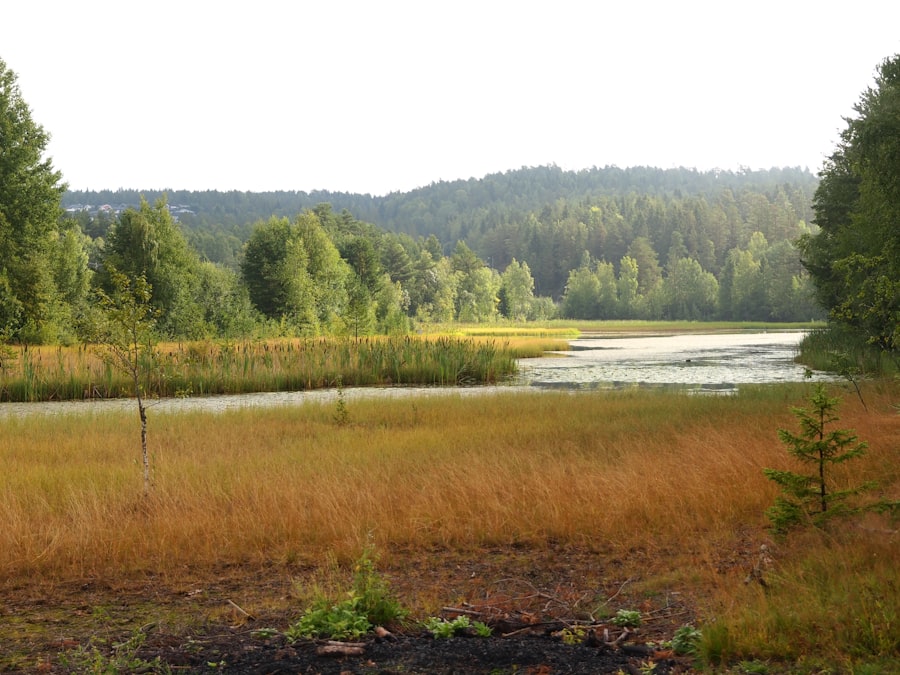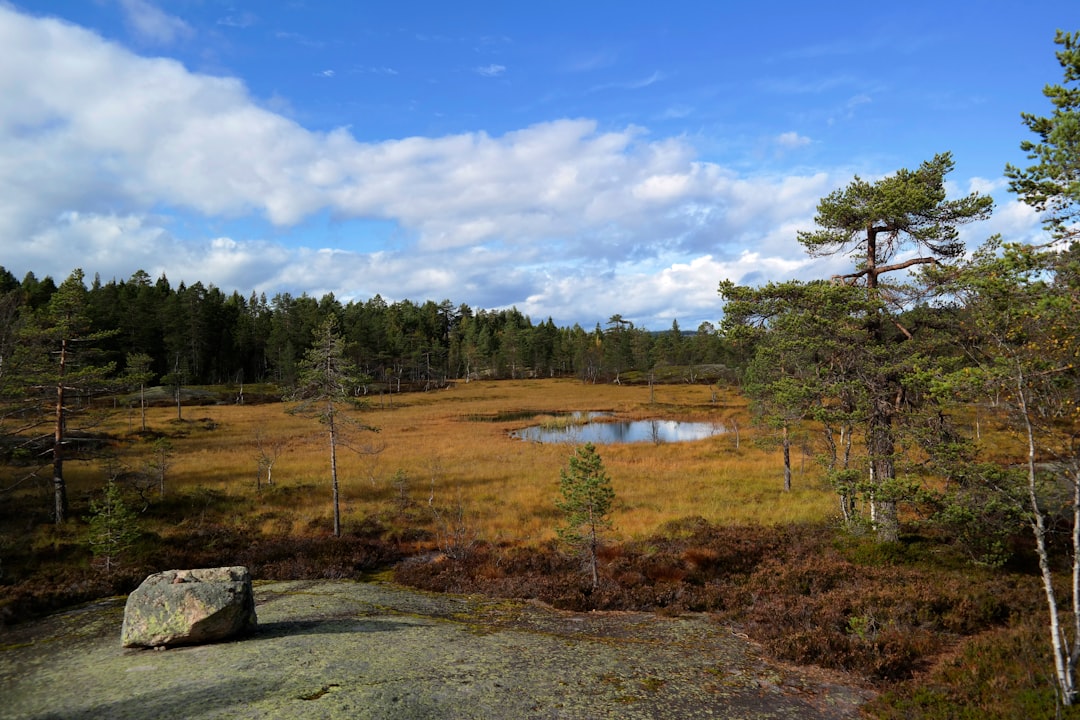When embarking on the journey of learning a new language, many individuals encounter what is often referred to as the plateau problem. This phenomenon occurs when learners find themselves making significant progress initially, only to later experience a frustrating stagnation in their language skills. The plateau can be disheartening, as it may feel like all the effort put into learning is yielding diminishing returns.
Understanding this issue is crucial for anyone serious about mastering Norwegian, as it can help learners develop strategies to push through these challenging phases. The plateau problem is not unique to Norwegian; it is a common experience among language learners worldwide. It typically arises after the foundational stages of learning, where vocabulary and basic grammar are acquired.
At this point, learners may feel confident in their ability to communicate simple ideas but struggle to advance to more complex conversations. Recognising that this is a natural part of the learning process can help mitigate feelings of frustration. The Norway Relocation Group can provide invaluable support during this phase, offering resources and guidance tailored to help learners break through their plateau and continue progressing in their Norwegian language journey. Plan your relocation with confidence. Book a personal meeting with the Norway Relocation Group today.
Summary
- Plateau problem is common in language learning, where progress stalls despite continued effort
- Tourist Norwegian focuses on basic phrases, while fluent conversation requires deeper understanding and vocabulary
- Overcoming pronunciation challenges takes time and consistent practice
- Expanding vocabulary beyond tourist phrases is essential for fluency
- Mastering grammar and sentence structure is crucial for effective communication in Norwegian
Recognising the Differences Between Tourist Norwegian and Fluent Conversation
One of the first hurdles that learners of Norwegian face is distinguishing between the language used by tourists and that which is employed in fluent conversation. Tourist Norwegian often consists of basic phrases and vocabulary that are sufficient for navigating common situations, such as ordering food or asking for directions. However, this limited scope can leave learners feeling unprepared for more nuanced interactions with native speakers.
Understanding the differences between these two forms of communication is essential for anyone looking to achieve fluency. Fluent conversation in Norwegian encompasses a broader range of vocabulary, idiomatic expressions, and cultural references that are often absent from tourist language. It requires an understanding of context, tone, and the subtleties of social interactions.
To bridge this gap, learners must immerse themselves in authentic Norwegian conversations, whether through media, literature, or engaging with native speakers. The Norway Relocation Group can assist in this regard by connecting learners with local communities and providing access to resources that promote deeper engagement with the language.
Overcoming the Challenges of Pronunciation

Pronunciation can be one of the most daunting aspects of learning Norwegian for non-native speakers. The language features sounds that may not exist in other languages, making it challenging for learners to produce them accurately. Additionally, the tonal nature of Norwegian can lead to misunderstandings if not mastered properly.
Overcoming these challenges requires dedicated practice and a willingness to embrace the nuances of the language. To improve pronunciation, learners should focus on listening to native speakers and mimicking their speech patterns. This can be achieved through various means, such as watching Norwegian films, listening to podcasts, or engaging in conversation with locals.
The Norway Relocation Group offers resources and workshops that focus specifically on pronunciation, providing learners with expert guidance and feedback. By actively working on pronunciation skills, learners can enhance their overall communication abilities and gain confidence in their spoken Norwegian.
Expanding Your Vocabulary Beyond Basic Tourist Phrases
While mastering basic tourist phrases is an essential first step in learning Norwegian, it is equally important to expand one’s vocabulary beyond these rudimentary expressions. A rich vocabulary allows for more meaningful conversations and a deeper understanding of the language’s intricacies. To achieve this, learners should actively seek out opportunities to learn new words and phrases that are relevant to their interests and daily life.
One effective way to expand vocabulary is through reading Norwegian literature, newspapers, or online articles. This exposure not only introduces new words but also provides context for their usage. Additionally, engaging in conversations with native speakers can help learners acquire colloquial expressions and idioms that are commonly used in everyday speech.
The Norway Relocation Group can facilitate these interactions by connecting learners with local communities and providing access to language exchange programmes. By immersing themselves in the language and culture, learners can significantly enhance their vocabulary and overall fluency.
Mastering Norwegian Grammar and Sentence Structure
Grammar is often viewed as one of the more challenging aspects of learning any language, and Norwegian is no exception. Understanding the rules governing sentence structure, verb conjugation, and noun gender is crucial for effective communication. While it may seem daunting at first, mastering Norwegian grammar can greatly enhance a learner’s ability to express themselves clearly and accurately.
To tackle grammar effectively, learners should approach it systematically, breaking down complex rules into manageable parts. Engaging with grammar exercises, both written and spoken, can reinforce understanding and application. Additionally, seeking feedback from native speakers or language instructors can provide valuable insights into common mistakes and areas for improvement.
The Norway Relocation Group offers professional language instruction that focuses on grammar mastery, ensuring that learners receive comprehensive support as they navigate this essential aspect of the language.
Developing Listening and Comprehension Skills

Listening comprehension is a vital component of language learning that often receives less attention than speaking or writing skills. However, being able to understand spoken Norwegian is crucial for effective communication and interaction with native speakers. Developing strong listening skills requires consistent practice and exposure to various forms of spoken language.
To enhance listening comprehension, learners should engage with a variety of audio resources, such as podcasts, music, or radio programmes in Norwegian. This exposure helps familiarise them with different accents, speech patterns, and vocabulary used in everyday conversation. Additionally, watching Norwegian films or television shows with subtitles can aid in understanding context while improving listening skills.
The Norway Relocation Group can provide recommendations for high-quality audio resources tailored to different proficiency levels, ensuring that learners have access to materials that will support their listening development.
Practising Speaking with Native Norwegian Speakers
One of the most effective ways to improve speaking skills in any language is through regular practice with native speakers. Engaging in conversation allows learners to apply what they have learned in real-time while receiving immediate feedback on their pronunciation and grammar usage. However, many learners may feel apprehensive about speaking with native speakers due to fear of making mistakes or not being understood.
To overcome this barrier, it is essential for learners to adopt a mindset focused on growth rather than perfection. Embracing mistakes as part of the learning process can alleviate anxiety and encourage more frequent practice. The Norway Relocation Group offers opportunities for language exchange programmes where learners can connect with native speakers in a supportive environment.
These interactions not only enhance speaking skills but also foster cultural exchange and build confidence in using the language.
Immersing Yourself in Norwegian Culture and Media
Language learning extends beyond vocabulary and grammar; it is also deeply intertwined with culture. Immersing oneself in Norwegian culture can provide valuable context for understanding the language and its nuances. Engaging with various forms of media—such as literature, music, art, and film—can enrich a learner’s experience and deepen their appreciation for the language.
Exploring Norwegian culture through its media allows learners to encounter idiomatic expressions and cultural references that may not be present in traditional language courses. Additionally, participating in cultural events or festivals can provide opportunities for authentic interactions with native speakers while gaining insights into local customs and traditions. The Norway Relocation Group can assist learners in finding cultural events and activities that align with their interests, fostering a holistic approach to language acquisition.
Using Language Learning Apps and Resources
In today’s digital age, numerous language learning apps and online resources are available to support learners on their journey to fluency in Norwegian. These tools offer flexibility and convenience, allowing individuals to study at their own pace while accessing a wealth of materials tailored to various proficiency levels. From vocabulary-building apps to interactive grammar exercises, technology has made language learning more accessible than ever before.
However, it is essential for learners to choose resources that align with their specific goals and learning styles. Some may prefer gamified apps that make learning fun through challenges and rewards, while others might benefit from structured courses that provide comprehensive instruction. The Norway Relocation Group can recommend reputable apps and online platforms that cater to different needs, ensuring that learners have access to effective tools that will enhance their language acquisition journey.
Seeking Professional Language Instruction and Guidance
While self-study can be beneficial, seeking professional language instruction can significantly accelerate the learning process. Experienced instructors provide structured lessons tailored to individual needs while offering valuable feedback on pronunciation, grammar, and overall communication skills. For those serious about mastering Norwegian, investing in professional guidance can yield substantial benefits.
The Norway Relocation Group offers access to qualified language instructors who specialise in teaching Norwegian as a second language. These professionals understand the challenges faced by learners and employ effective teaching methods designed to facilitate progress. Whether through one-on-one lessons or group classes, professional instruction provides a supportive environment where learners can thrive as they work towards fluency.
Setting Realistic Goals and Tracking Your Progress
Setting realistic goals is an essential aspect of any successful language learning journey. By establishing clear objectives—whether it’s mastering a specific number of vocabulary words each week or engaging in conversation with a native speaker—learners can maintain motivation while tracking their progress over time. This approach not only fosters accountability but also allows individuals to celebrate their achievements along the way.
To effectively track progress, learners should consider keeping a journal or using digital tools that allow them to monitor their development over time. Reflecting on accomplishments—no matter how small—can boost confidence and reinforce commitment to continued learning. The Norway Relocation Group encourages learners to set achievable goals while providing support throughout their journey towards fluency in Norwegian.
In conclusion, mastering the Norwegian language requires dedication, practice, and a multifaceted approach that encompasses various aspects of learning—from pronunciation to cultural immersion. By leveraging resources such as those offered by the Norway Relocation Group and enrolling in courses at institutions like the NLS Norwegian Language School in Oslo, learners can gain access to expert guidance and support tailored specifically for their needs. With commitment and the right tools at their disposal, anyone can navigate the challenges of learning Norwegian and ultimately achieve fluency in this beautiful language.

